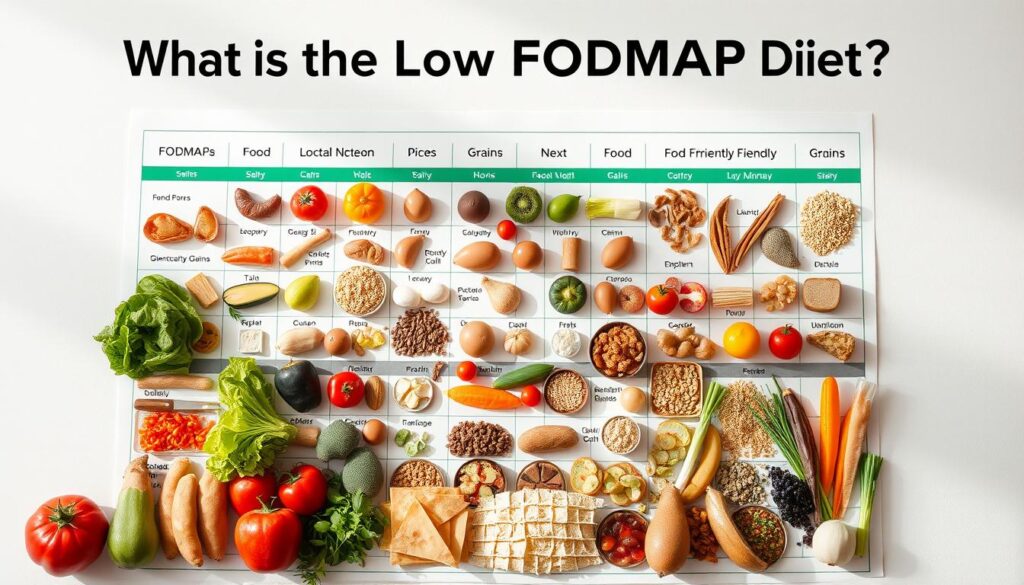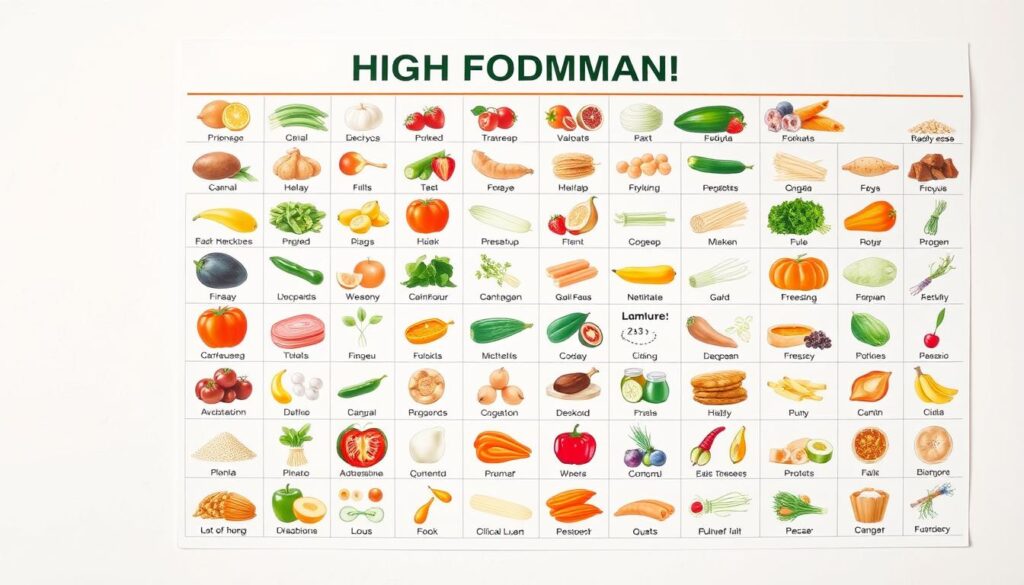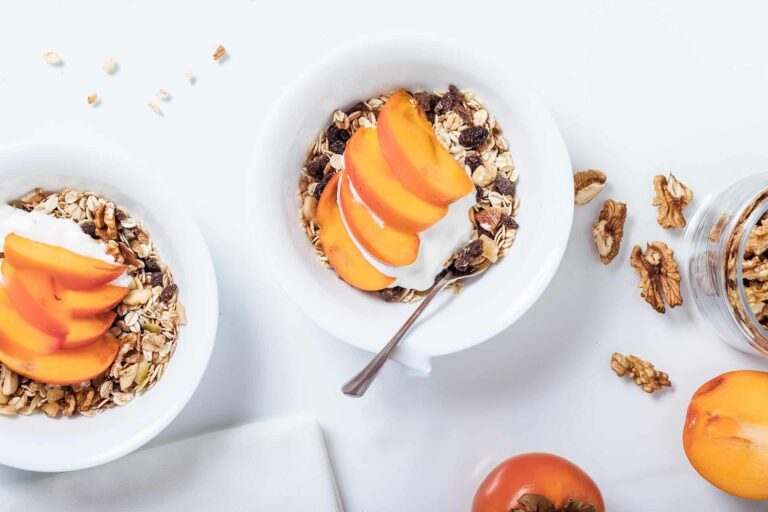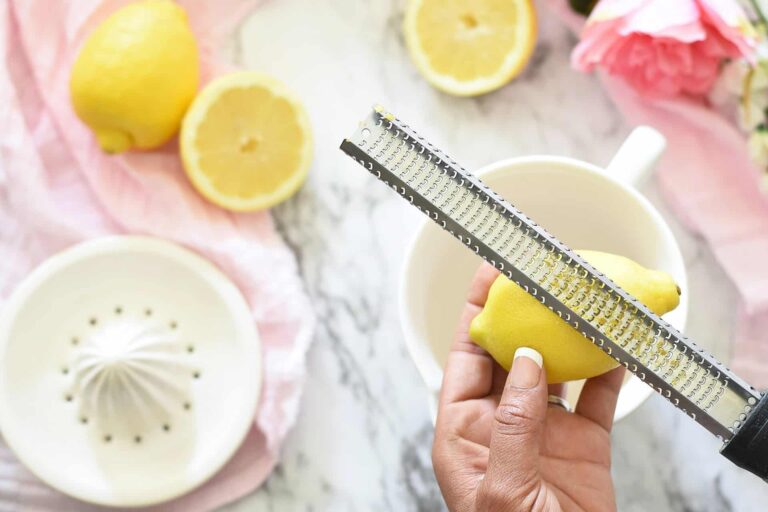Complete Guide to Low FODMAP Diet

Your stomach churns, and bloating makes your clothes tight. You plan your day around bathroom access. If this sounds like you, you’re not alone. Millions of Americans face digestive discomfort that affects their life quality.
The Low FODMAP diet might be what you need. It helps you enjoy meals without worry. This diet is backed by science and has helped many with irritable bowel syndrome and other digestive problems.
By removing certain carbs that ferment in your gut, you find out which foods upset you. The Low FODMAP diet is all about finding what works for you. What bothers one person might not bother another.
The diet has three phases. You start with elimination, then reintroduction, and end with a maintenance phase that fits your life. Monash University research shows up to 75% of IBS sufferers see symptom relief.
Key Takeaways
- The Low FODMAP diet is a temporary eating plan designed to identify food triggers for digestive issues
- FODMAPs are specific types of carbohydrates that can cause gas, bloating, and stomach pain in sensitive individuals
- The diet consists of three phases: elimination, reintroduction, and long-term maintenance
- Most people with IBS see improvement in symptoms within 2-6 weeks of starting FODMAP elimination
- Success requires careful food tracking and patience during the reintroduction phase
- The goal is to create a personalized diet that maximizes food variety while maintaining digestive health
What is the Low FODMAP Diet?
The Low FODMAP diet is a plan to help with digestive issues. It aims to reduce IBS relief symptoms. It limits certain fermentable carbohydrates that cause gut problems.
By avoiding specific foods, you can lessen bloating and stomach pain. You’ll find out which FODMAP friendly foods are good for you.
Understanding FODMAPs
FODMAP stands for Fermentable Oligosaccharides, Disaccharides, Monosaccharides, and Polyols. These fermentable carbohydrates are in many foods:
- Fructose in apples, honey, and high-fructose corn syrup
- Lactose in milk, yogurt, and soft cheeses
- Fructans in wheat, rye, onions, and garlic
- Galactans in beans, lentils, and chickpeas
- Polyols in stone fruits, mushrooms, and sugar-free gum

The Science Behind the Diet
High-FODMAP foods don’t digest well in your small intestine. They go to your colon where bacteria ferment them. This makes gas and pulls water into your intestines.
For some, this leads to bloating, cramps, and bowel changes.
Benefits of Following a Low FODMAP Diet
Studies show 75% of IBS patients feel better on this diet. They see less gas and bloating, fewer cramps, and regular bowel movements. It also improves their quality of life.
Many feel more at ease eating out and managing their symptoms with FODMAP friendly foods.
Who Should Consider a Low FODMAP Diet?
The low FODMAP diet isn’t for everyone. It’s best for people with chronic digestive problems. If you have ongoing gut issues, this diet might help. But, you should do it with a doctor’s advice.
Individuals with IBS
Those with irritable bowel syndrome (IBS) often see big improvements. Up to 75% of IBS patients feel better with this diet. Signs that might get better include:
- Abdominal pain and cramping
- Bloating and gas
- Diarrhea or constipation
- Unpredictable bowel movements

Other Digestive Disorders
Not just IBS, but other digestive issues can also benefit. Small intestinal bacterial overgrowth (SIBO) and some inflammatory bowel diseases may see relief. This includes Crohn’s disease.
Some people only react to certain FODMAPs, like lactose or fructose. They might not need to cut out all FODMAPs.
Consulting Healthcare Professionals
Always talk to a doctor before starting a new diet. A gastroenterologist can check for other serious problems. A dietitian can help you stay healthy and find out what foods bother you.
How to Start a Low FODMAP Diet
Starting a low FODMAP diet needs careful planning and commitment. It’s a 2-4 week process where you remove all major FODMAP sources. Instead of feeling restricted, enjoy the variety of tasty foods you can eat. This helps your digestive system get a much-needed break.
Preparing for the Elimination Phase
Before starting, clean out your pantry and fridge. Check ingredient labels for hidden FODMAPs. Look out for onions and garlic in sauces, stocks, and dressings. Also, watch for “natural flavors” or “extracts” which might contain high-FODMAP ingredients.
Talk to your healthcare provider about your supplements and medications. Some contain sugar alcohols or prebiotics. Stock up on whole foods and simple seasonings to make the transition smoother.

Keeping a Food Diary
A food diary is your best friend during FODMAP elimination. Write down everything you eat and drink, including portion sizes and when. Also, note any symptoms you feel. Remember, FODMAP effects can take 24-48 hours to show up, not right away.
Your diary should track:
- All meals and snacks with specific ingredients
- Beverage consumption throughout the day
- Digestive symptoms and their severity
- Energy levels and overall well-being
- Stress levels and sleep quality
Importance of Meal Planning
Meal planning is key to a Low FODMAP diet. Spend time each week planning meals, making shopping lists, and batch cooking. This reduces stress and ensures you have safe food options when you’re hungry.
Foods to Avoid on a Low FODMAP Diet
Starting a low FODMAP diet means knowing which foods to skip. The FODMAP list includes carbs that can upset your stomach. Knowing these foods helps you avoid symptoms.
High-FODMAP Fruits and Vegetables
Fruits and veggies with high FODMAPs can upset your stomach. Fruits like apples, pears, mangoes, cherries, and watermelon are high in fructose. Ripe bananas are off-limits, but unripe ones are okay.

Vegetables also have their challenges. Garlic and onions are big no-nos because they’re in so many dishes. Other veggies to skip include artichokes, asparagus, cauliflower, mushrooms, and sugar snap peas. They can ferment in your gut.
Grains and Dairy Products
Grains like wheat, rye, and barley are high in fructans. This means no bread, pasta, cereals, or baked goods. Dairy products are also a problem because of lactose.
| Dairy Product | Lactose Content | FODMAP Level |
|---|---|---|
| Milk (1 cup) | 12-13g | High |
| Regular Yogurt | 5-8g | High |
| Cottage Cheese | 3-4g | High |
| Ice Cream | 6-8g | High |
| Ricotta Cheese | 3-5g | High |
Common Condiments and Sweeteners
Many sweeteners and condiments have hidden FODMAPs. Honey, agave syrup, and high fructose corn syrup are on the list. Sugar alcohols like sorbitol, mannitol, and xylitol are also bad news.
Legumes like black beans, kidney beans, and baked beans are high in galacto-oligosaccharides (GOS). Reading ingredient labels is key to avoid these in processed foods.
Foods to Enjoy on a Low FODMAP Diet
Following a Low FODMAP diet doesn’t mean your meals have to be boring. You’ll find many tasty FODMAP friendly foods. These foods make your meals satisfying and help manage your digestive health.
Low-FODMAP Fruits and Vegetables
Many colorful fruits and vegetables are safe for your diet. They add flavor and nutrition to your meals. Fresh produce is key to a healthy diet, and you have many options.
| Fruits | Vegetables | Serving Notes |
|---|---|---|
| Unripe bananas | Carrots | Unlimited portions |
| Blueberries | Cucumber | Unlimited portions |
| Strawberries | Spinach | Unlimited portions |
| Grapes | Potatoes | Unlimited portions |
| Oranges | Tomatoes | Unlimited portions |
| Pineapple | Zucchini | Unlimited portions |
| Cranberries | Broccoli | 2 tablespoons / ½ cup |
Safe Grains and Proteins
Knowing which grains and proteins are safe makes meals satisfying. Rice and quinoa are great for bowls and sides. Gluten-free pasta and bread are okay in small amounts.
Plain meats, fish, and eggs are good protein sources. Plant-based options like tofu and tempeh are great for vegetarians.
Dairy Alternatives
You don’t have to miss out on creamy textures and calcium. Almond milk and rice milk are perfect for smoothies and cereals. Lactose-free products taste like regular dairy but are safe.
Aged cheeses like cheddar, Swiss, and Parmesan are low in lactose. They’re good for most people on this diet.
Preparing Low FODMAP Meals
Making tasty Low FODMAP recipes is easy. Just use the right ingredients and the right amounts. You can enjoy meals all day long. Planning your meals keeps things interesting and follows the diet rules.
From yummy breakfasts to great snacks, there’s lots to try. Your taste buds will thank you.
Breakfast Ideas
Begin your day with healthy, simple choices. Try rice krispies or corn flakes with lactose-free milk for a quick start. Scrambled eggs with gluten-free toast are also good.
Oatmeal with strawberries or blueberries is a great choice for energy. Just remember to control portions. Nuts should be 2 tablespoons and avocado 1½ tablespoons per meal.
Lunch and Dinner Suggestions
For lunch or dinner, try grilled chicken with carrots and rice. Or baked salmon with spinach and quinoa. Salads with lettuce, tomatoes, and cucumber are also good.
Stir-fries with allowed veggies and firm tofu or shrimp are tasty. They’re easy to make and full of flavor.
Snacks and Desserts
For snacks, choose wisely. Rice cakes, plain popcorn, or small fruits are good. They keep you full between meals.
For dessert, enjoy dark chocolate, fruit sorbet, or jam on gluten-free crackers. Just remember, limit sweeteners to 1 tablespoon per meal.
| Meal Type | Food Options | Serving Size |
|---|---|---|
| Breakfast | Rice Krispies with lactose-free milk | ½ cup cereal |
| Lunch | Grilled chicken salad | 4 oz chicken |
| Snack | Rice cakes | 2-3 cakes |
| Dinner | Baked salmon with quinoa | 4 oz salmon, ½ cup quinoa |
| Dessert | Dark chocolate | 1 ounce |
Tips for Dining Out on a Low FODMAP Diet
Eating out on a low FODMAP diet can seem hard at first. But, with the right steps, you can enjoy meals without worry. These tips will help you pick safe foods and talk to restaurant staff. Being prepared and clear with staff makes dining out fun and safe.
Communicating with Restaurant Staff
Tell your server about your diet needs as soon as you sit down. Say you can’t have onions, garlic, or certain foods. Most places can make changes if you ask clearly.
Ask for simple dishes like grilled, baked, or steamed. Chefs can make plain proteins and veggies for you. You can add safe herbs and spices yourself. If you can, ask if they can make changes – they usually can.
Choosing Suitable Dishes
Look for low FODMAP foods on the menu. Choose grilled chicken, fish, or steak with veggies like carrots or spinach. Plain rice or potatoes are good sides. Stay away from creamy sauces and breading, as they might have hidden FODMAPs.
| Safe Restaurant Options | Items to Avoid |
|---|---|
| Grilled chicken breast | Breaded items |
| Steamed rice | Pasta dishes |
| Baked potato | Cream-based soups |
| Green salad with oil and vinegar | Pre-made dressings |
Handling Possible Contaminants
Busy kitchens can lead to cross-contamination. Ask for a clean pan or a special spot on the grill. Be careful with stocks and broths, as they often have onions. Stick to water, black coffee, or safe teas. Wine and whiskey are okay in small amounts.
Always trust your gut when eating out. If unsure, pick something simple. Many restaurants now get dietary restrictions better, making it easier to find safe, tasty meals.
Common Mistakes to Avoid
Starting a low FODMAP diet can be tough. It’s easy to make mistakes that hurt your progress. Knowing common FODMAP errors helps you feel better and makes the diet easier.
The biggest mistakes are about portion sizes, hidden ingredients, and rushing the reintroduction phase.
Misunderstanding Portion Sizes
Many think low FODMAP foods are okay in any amount. But, even safe foods have limits. For example, almonds are fine in 10 nuts but not 20.
Controlling portions is key to managing symptoms.
| Food Item | Low FODMAP Serving | High FODMAP Serving |
|---|---|---|
| Almonds | 10 nuts (12g) | 20 nuts (24g) |
| Broccoli | 3/4 cup (75g) | 1.5 cups (150g) |
| Sweet Potato | 1/2 cup (75g) | 1 cup (150g) |
| Canned Chickpeas | 1/4 cup (42g) | 1/2 cup (84g) |
Ignoring Hidden FODMAPs
Reading labels is key to avoiding FODMAP mistakes. High-fructose corn syrup is in salad dressings and marinades. Gluten-free foods often have garbanzo or soy flour, which are high in FODMAPs.
Granola bars often have agave nectar or chicory root fiber. “Natural flavors” can mean onion or garlic extracts.
Skipping Reintroduction Phases
The reintroduction phase is like being a FODMAP detective. Skipping it means your diet stays too strict. Most people find only one or two FODMAP groups cause issues.
Testing helps find your specific triggers. The goal is to add more foods while keeping symptoms under control, not to stay restricted forever.
Long-Term Management of a Low FODMAP Diet
The low FODMAP diet isn’t forever. After the elimination and reintroduction phases, you start the maintenance phase. Here, you make a plan that works just for you. This way, you can enjoy many foods and stay comfortable.
Transitioning to a Healthy, Balanced Diet
In the maintenance phase, eat as many foods as you can handle. Your tolerance might grow over time. Aim for a diet that’s full of:
- All the foods you’ve successfully reintroduced
- A variety of fruits and vegetables
- Whole grains you can digest comfortably
- Adequate protein sources
- Healthy fats
Many foods with FODMAPs help your gut. They act as prebiotic fibers, feeding good bacteria. If you can eat these foods, add them to your diet for better gut health.
Monitoring Symptoms Over Time
Keep an eye on your symptoms during the maintenance phase. Your tolerance can change as your gut heals. Note:
- Foods that cause symptoms
- Portion sizes you can handle
- Changes in your digestion
- Stress levels and sleep quality
The Role of Continued Education
Stay up-to-date with FODMAP research and diet tips. New studies help us learn more about digestion. Join support groups or see a dietitian who knows about digestive health.
Resources and Tools for Success
Finding the right FODMAP resources can make your journey easier. The UVA Digestive Health Center offers detailed food lists and guidelines. These help you understand which foods work for your body.
Working with a dietitian who specializes in the low FODMAP diet is helpful. They give you personalized guidance. This prevents you from cutting out foods you can actually enjoy.
Recommended Books and Websites
Several books and websites provide reliable information about the low FODMAP diet. The Monash University website is the gold standard for FODMAP content. They developed the diet.
Books by Kate Scarlata and Patsy Catsos offer practical recipes and shopping tips. These resources include portion size charts and label reading guides. They also list safe herbs and spices like basil, oregano, ginger, turmeric, and rosemary to keep your meals flavorful.
Apps for Tracking FODMAP Intake
Digital tracking tools simplify your food monitoring process. The Monash University FODMAP Diet app provides up-to-date food ratings and serving sizes. Apps like Cara Care and mySymptoms help you log meals and symptoms.
These apps let you see how different foods affect your digestive system. You can make better choices based on real data.
Support Groups and Online Communities
Connecting with others following the low FODMAP diet is helpful. Facebook groups like “Low FODMAP Diet Support Group” and Reddit’s r/FODMAPS community share recipes and tips. They also share personal experiences.
Local support groups through hospitals or dietitian offices offer face-to-face connections. These communities help you feel less alone. They provide answers to everyday challenges you might face.






